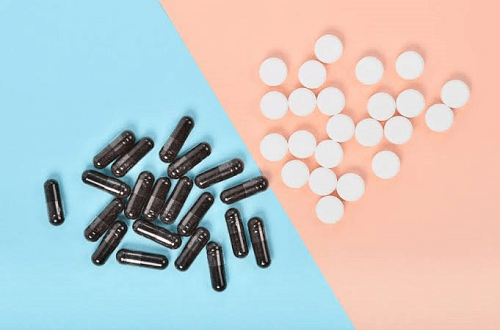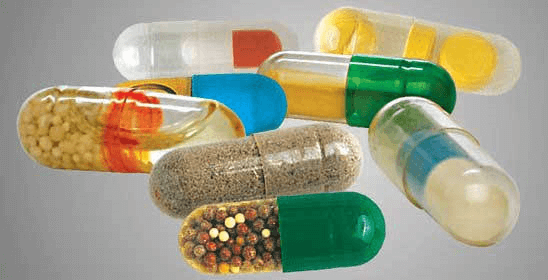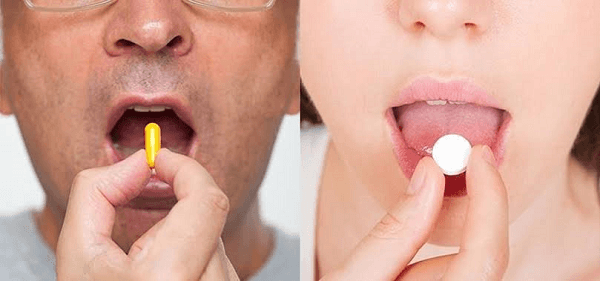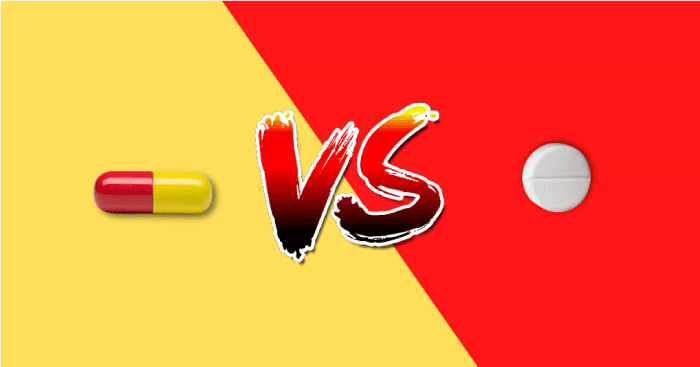Differences Between Tablets and CapsulesIt may be difficult for an untrained eye to know how capsules and tablets are different from one another. After all, both of them are medications that must be swallowed. Totally, correct? Even so, the reader has to be informed of the differences between the two types of drugs before deciding which one to use. 
The two primary options are oral medications such as tablets or capsules. With the help of our digestive system, capsules and tablets administer a drug or dietary supplement for a particular medical need. There are various variations between capsules and tablets, even though they function similarly. This essay will thoroughly cover the distinction and why it is crucial to understand it. What is a Tablet?An oral drug administered as a tablet is a tiny, round, solid piece. Tablets can be composed of compressed powder and are often manufactured in various sizes and forms. Materials blended to create tablets are compressed to create a solid tablet that can be absorbed into the digestive system. Tablets can be produced using three different techniques: direct compression, dry granulation, and wet granulation.
To bind all of the chemicals in the tablet together, tablets may include inactive substances or excipients. Oblong, round, and disc-shaped tablets are the most common forms used in tablet manufacturing. As they are simpler to swallow, oblong tablets are often known as caplets. 
Some tablets include a line running down the center of the tablet, which makes it simpler to split the tablet in half. Certain tablets are also produced with a specific coating to prevent the drug from dissolving in the stomach. This helps to guarantee that the pill would only dissolve once it has reached the small intestine. Forms of TabletsChewable, orally disintegrating, sublingual, and effervescent tablets are the primary categories of tablet forms.
What is a Capsule?Another form of a pill is a capsule with a protective shell around the drug. The powdered and liquid pharmaceutical formulations found in capsules have the same effects. As the capsule enters your digestive system, it bursts open. Your liver then processes the active substances and releases them into your circulation. Capsules are pills with a shell on the outside that the digestive system absorbs. Like medication packaged in a tablet, the drug in a capsule is dispersed and digested after being absorbed into the bloodstream. The most common types of capsules are soft-gel capsules and hard-shelled capsules. 
Hard-shelled capsules often contain powdered medicine, but occasionally they can include liquid. Like "liquids," soft-shelled capsules frequently include liquid medications and are composed of gelatine.
The Key Differences Between Capsules and TabletsAlthough it's safe to consume either capsules or tablets, there are some distinctions between them. The main distinctions are broken down as follows: Absorption Capsules provide better protection to prevent the drug from being weakened by stomach acids. Its two component elements are the inner suspension and outer shell of a capsule. The exterior shell is often made of gelatine, while the interior solution may be liquid, semisolid, or granular. Tablets are somewhat more effective than capsules because tablets might have a lower amount of bioavailability, which prevents the drug from reaching our bloodstream. Tablets are compressed powders with additional inactive substances like binders, fillers, disintegrants, etc. 
Composition Typically, capsules include a powdered or liquid form of medicine and are constructed of gelatine or vegetarian-friendly substitutes. The compressed powder is typically used to make tablets. Animal-based products Soft-shell capsules are produced using gelatine, an ingredient vegetarian may find objectionable because it comes from animal sources. Also, vegetarian-friendly substitutes can be used to create capsules. Often, tablets don't have any gelatin in them. 
Size A small range of sizes is available for capsules. Tablets come in various sizes, but they may be split in two if necessary. Due to the restricted area in a capsule, bigger formulas are occasionally more feasible to create as tablets. This allows tablet manufacturers to cram more substance into a relatively small space than with capsules or alternative delivery systems. Splitting & Chewable In general, capsules can't be broken apart. The notched edges of tablets make it simple to divide them in two. The capsules cannot be chewed. Yet, they might not taste as delicious as capsules. Tablets can be manufactured into chewable forms. 
Unpredictability Because of the possibility of uneven distribution of the contents, capsules offer a certain element of uncertainty. When the active substance is dispersed uniformly throughout the tablet, tablets are often more predictable. Tablet v/s Capsule : Tabular Representation
In ConclusionDepending on the conditions of each person. The drug should always be taken most effectively for the patient. Although they both serve the same function, tablets and capsules differ in a few ways. Capsules have a shorter shelf life than tablets, which exist in many different shapes. In addition, they have a larger concentration of active components than what can fit within a capsule. Comparatively speaking, tablets take longer to take effect than capsules, and occasionally, they may break down unevenly inside the body. Both tablets and capsules have advantages. One might consider how the medication will affect them physically and subjective factors like the taste when determining whether to take pills or capsules. Speaking with their doctor can help them choose the ideal capsules or tablet for their requirements if they have allergies to specific ingredients, need a vegan choice that precludes capsules as an alternative, or has trouble swallowing large tablets.
Next TopicDifference between
|
 For Videos Join Our Youtube Channel: Join Now
For Videos Join Our Youtube Channel: Join Now
Feedback
- Send your Feedback to [email protected]
Help Others, Please Share










